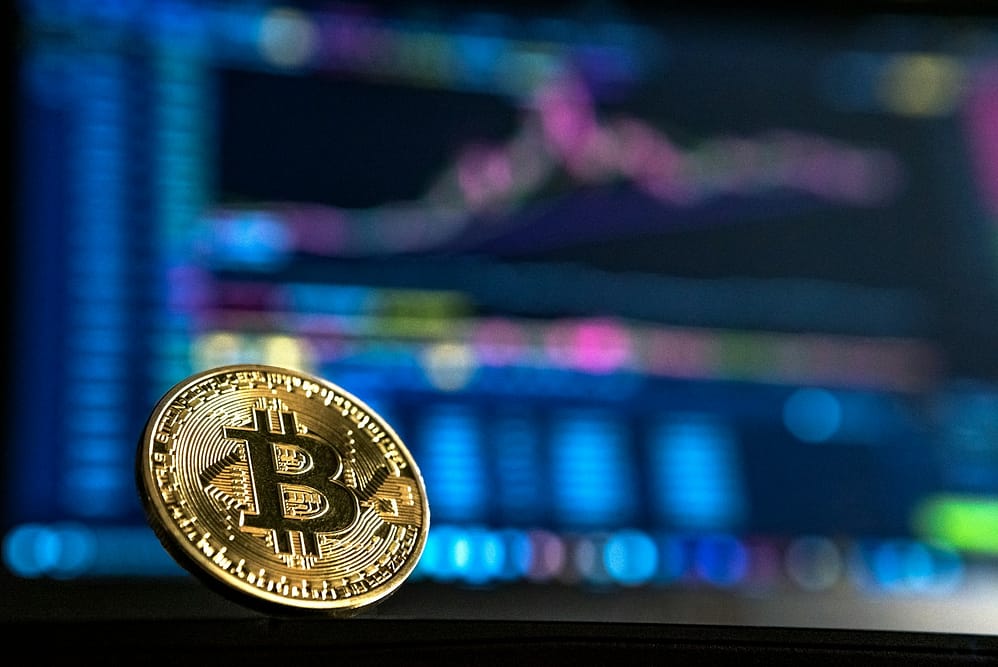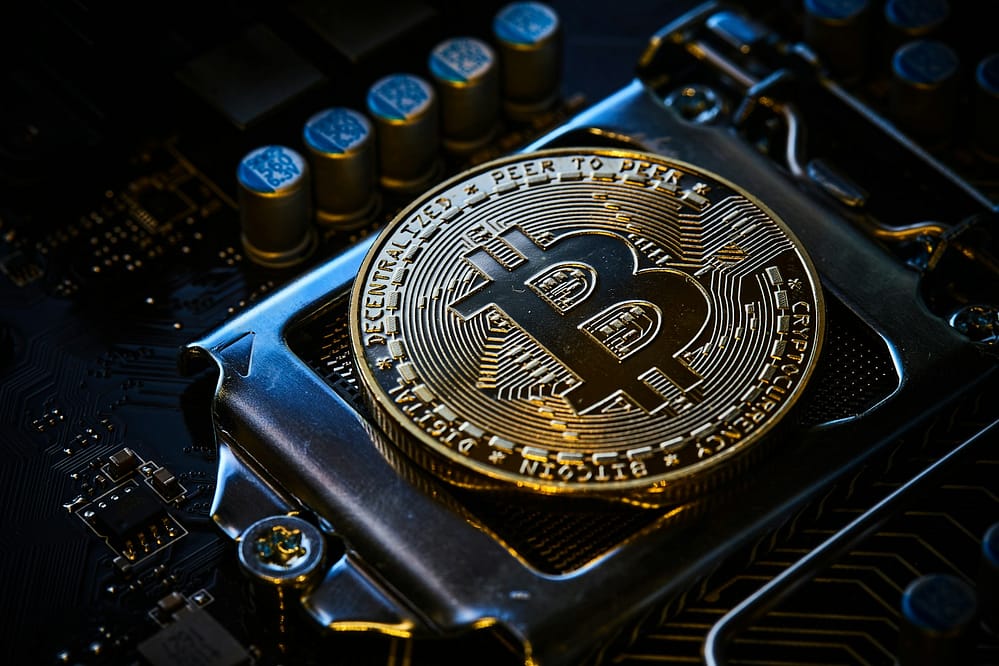What Is a Crypto ETF? A Beginner-Friendly Guide to Bitcoin & Crypto Investing
Investing used to feel like something only experts could do. But today, financial tools like ETFs are opening new doors — even in the world of cryptocurrency. If you’ve been hearing about “Crypto ETFs” and wondering what exactly they are and whether they’re worth considering, you’re in the right place.
Table of Contents
The Crypto Bridge: What Is a Crypto ETF and Why It’s Changing Investing Forever
If the phrase “Crypto ETF” has been swirling around your screen, making you feel like you need a finance degree just to keep up, take a deep breath. You are absolutely not alone. For years, the world of digital currency—Bitcoin, Ethereum, and all the rest—felt walled off, reserved for the tech-savvy, the risk-takers, and those who spoke fluent blockchain.
But now, thanks to the quiet, powerful structure of the Exchange-Traded Fund (ETF), those walls are tumbling down.
A Crypto ETF isn’t some hyper-complex financial invention; it’s a revolutionary solution to a simple problem: How do we make investing in digital assets easy, safe, and familiar for everyone? It’s the bridge that finally connects the old, regulated world of Wall Street with the dynamic, decentralized world of crypto.
This comprehensive guide will not only expand on the basics but dive deep into the mechanics, the monumental impact on institutional money, and the key risks you need to manage before you decide to jump in. Let’s break down the past, present, and future of Crypto ETFs, without the confusion, without the jargon, and with a generous dose of human touch.
Part I: The Fundamentals—Demystifying the ETF Structure
To truly appreciate a Crypto ETF, we must first understand its packaging.
What Exactly is an ETF? (The Basket Analogy)
ETF stands for Exchange-Traded Fund. It’s the ultimate investment wrapper.
Imagine you want to invest in a diverse group of companies—say, the entire U.S. stock market. Instead of buying one share of all 500 companies, you buy one share of an ETF. That ETF is like a big, secure basket that holds a tiny piece of all 500 stocks inside. When you buy one share of the basket, you instantly get diversification and exposure to the whole group.
Why Investors Love ETFs:
- Trade Like Stocks: You can buy and sell ETF shares instantly throughout the trading day, just like Apple or Tesla stock.
- Instant Diversification: They spread your risk. If one asset in the basket falls, the others can cushion the impact.
- Transparency: You always know exactly what is inside the basket and how it’s performing.
- Low Cost: They are generally much cheaper to own than actively managed mutual funds.
The Simple Truth: What a Crypto ETF Does
A Crypto ETF simply replaces the stocks, bonds, or gold in that basket with a cryptocurrency like Bitcoin or Ethereum.
The key takeaway, the one point to tattoo onto your brain, is this: You are not buying or owning the actual crypto.
You are buying a share of a regulated fund that holds the crypto (or crypto-related assets) on your behalf.
- Bitcoin goes up? The value of the Bitcoin ETF shares goes up.
- Bitcoin goes down? The value of the Bitcoin ETF shares goes down.
It’s price exposure without the operational headache of wallets, private keys, and exchanges. The ETF provider (like BlackRock or Fidelity) handles the complicated, high-stakes security for you.
Part II: The Structural Revolution—Spot vs. Futures
Not all Crypto ETFs are created equal. They fall into two major categories that dictate how accurately they track the crypto’s price and what kind of investor they appeal to. Understanding this difference is absolutely critical.
1. The Gold Standard: Spot Crypto ETFs (The Direct Asset)
A Spot ETF holds the actual, physical cryptocurrency right now, on the spot.
| Feature | Details | Why Investors Prefer It |
| Underlying Asset | The fund physically owns and stores the actual Bitcoin, Ethereum, etc. | Offers the most accurate price tracking because its value is derived directly from the current market price. |
| Custody | The crypto is held in highly secure, often offline cold storage by a regulated custodian (like Coinbase Custody). | Removes the personal security risk of self-custody (losing keys, hacks). |
| Ideal For | Long-term, buy-and-hold investors seeking pure exposure to the asset’s price appreciation. |
The launch of the U.S. Spot Bitcoin ETF in early 2024 was a monumental event because it gave mainstream investors the product they always wanted: direct exposure to Bitcoin’s price in a regulated, familiar wrapper.
2. The Complex Derivative: Futures Crypto ETFs (The Bet on Price)
A Futures ETF does not hold the actual cryptocurrency. Instead, it holds futures contracts.
| Feature | Details | Why It’s More Complex |
| Underlying Asset | The fund buys contracts—agreements to buy or sell the crypto at a set price on a future date. | Its price tracks the futures market, not the current spot price. |
| Tracking Error | Can suffer from “contango” (where futures contracts are more expensive than the spot price). | These dynamics can lead to the ETF’s performance lagging the actual crypto price over the long term, due to constant “rolling over” of contracts. |
| Ideal For | Experienced traders or those seeking exposure in a regulatory environment that only permits futures-based products. |
While Futures ETFs were the first ones approved by U.S. regulators, Spot ETFs are overwhelmingly preferred by passive, long-term investors because they are simpler and track the price more accurately.
Part III: The Market Shift—Why Institutions Love Crypto ETFs
The launch of Crypto ETFs wasn’t just a win for retail investors; it was the formal handshake between the crypto ecosystem and the world’s most powerful financial institutions.
The Trillion-Dollar On-Ramp
Institutional investors—pension funds, endowments, sovereign wealth funds, and major bank wealth managers—manage trillions of dollars. Their primary constraints are risk, regulation, and compliance.
- Regulatory Compliance: Most institutional mandates prevent them from directly holding an unregulated asset like Bitcoin. The ETF wrapper, however, transforms Bitcoin into a regulated security that can be easily bought and held within their compliance structures.
- Operational Ease: Imagine a massive pension fund trying to buy and securely store billions of dollars worth of Bitcoin. It requires specialized legal teams, secure digital cold storage, and complex custody insurance. The ETF provider handles all of this heavy lifting, simplifying the due diligence to a single purchase order.
- Liquidity and Transparency: ETFs trade on major stock exchanges, guaranteeing high liquidity (the ability to buy or sell quickly) and pricing transparency throughout the trading day. This is essential for large institutions that need to move massive amounts of capital efficiently.
Concrete Data Point: As of mid-2025, major Spot Bitcoin ETFs have amassed tens of billions in assets under management (AUM), with the largest funds, like BlackRock’s IBIT, quickly becoming one of the most successful ETF launches in history. This inflow of institutional capital signals a major strengthening of conviction in crypto as a legitimate asset class.
The Spillover Effect on Market Legitimacy
When a firm like BlackRock, managing over $9 trillion in assets, launches a Bitcoin product, it doesn’t just attract money; it attracts legitimacy. This stamp of institutional approval attracts more regulators, more traditional companies, and ultimately, accelerates mass adoption and acceptance of the technology itself.
Part IV: Risk Management—It’s Still Crypto, After All
While the ETF structure mitigates security and operational risks, it does NOT eliminate the fundamental risk of the underlying asset.
The Core Risks You Still Face
| Risk Factor | Description | How to Manage It |
| Price Volatility | The most significant risk. Bitcoin and Ethereum can experience price swings of 10% to 20% or more in a matter of days. | Position Sizing: Invest a small, predetermined percentage of your portfolio (many advisors suggest 1% to 5%). Never invest money you cannot afford to lose. |
| Management Fees (ER) | ETF managers charge an Expense Ratio (ER) annually (e.g., 0.20% – 0.50%). | Research Fees: Choose the fund with the lowest permanent Gross Expense Ratio, as high fees will erode your returns over decades. |
| Tracking Error | The risk that the ETF’s price doesn’t perfectly match the underlying crypto’s price (more common with Futures ETFs). | Choose Spot: Stick to Spot Crypto ETFs for the highest tracking accuracy. |
| Regulatory Risk | New government regulations could potentially impact the ability of the fund to operate or change the tax treatment of the asset. | Stay Informed: Keep abreast of major regulatory changes in your country, though the U.S. approval of Spot ETFs has largely stabilized this risk for major assets. |
A Sound Risk Strategy (The 2% Rule)
A commonly cited risk-management strategy, especially in volatile markets, is the 2% Rule for position sizing: For any single trade or position, you should not risk more than 2% of your total trading capital.
In the context of Crypto ETFs, this translates to: Be comfortable with a scenario where your entire crypto allocation (that 1-5% slice of your portfolio) could drop by 50% or more. This is why careful position sizing is the most crucial part of investing in this asset class.
Part V: The Choice—ETF vs. Direct Ownership
The arrival of the ETF makes the choice between the two main investing methods clearer than ever. Which path is right for you?
| Feature | Crypto ETF (IBIT, FBTC, etc.) | Buying Real Crypto (on an exchange) |
| Ease of Access | Extremely Easy. Buy with a standard brokerage account (e.g., Schwab, Fidelity). | Moderate Complexity. Requires setting up exchange accounts, wallets, and understanding security. |
| Ownership | Indirect. You own a share of a fund that owns the crypto. | Direct. You own the actual asset and hold the private keys (Self-Custody). |
| Web3/Utility | None. You cannot send it, spend it, stake it, or use it to buy NFTs or participate in DeFi. | Full Utility. You can use the crypto for staking, yield farming, transactions, and Web3 apps. |
| Tax Implications | Often treated like a stock investment (e.g., capital gains on sales), which can simplify tax reporting. | Tax treatment can be complex, involving tracking gains/losses on every transaction (staking, spending, selling). |
| Best For | Passive, long-term exposure within a retirement account (IRA, 401k), prioritizing simplicity and regulation. | Active participation in the crypto ecosystem, prioritizing full control and Web3 functionality. |
The Human Element: If the thought of a “seed phrase” gives you cold sweats, the ETF is your friend. If the idea of a bank or large institution holding your asset is against your core belief in decentralization, then direct self-custody is your mission.
Part VI: Looking Ahead—The Future of Crypto ETFs
The story of the Crypto ETF is far from over. It’s not the end of the journey; it’s the beginning of a massive technological shift known as Tokenization.
The Next Wave: Beyond Bitcoin and Ethereum
The success of the Bitcoin and Ethereum Spot ETFs is pushing the industry to explore ETFs for other large-cap, utility-driven tokens like Solana or Cardano. As these funds attract more assets, they further legitimize the entire digital asset ecosystem.
The Tokenization Revolution
Some industry experts believe that ETFs are merely a stepping stone to a greater change: Tokenization.
- What is Tokenization? It’s the process of taking a traditional asset—like a share of an ETF, a piece of real estate, or a rare painting—and creating a digital, programmable token that represents its ownership on a blockchain.
- The Vision: In the future, instead of buying a share of a BlackRock ETF ticker, you might simply buy a token that represents your share of the fund. This token could then be traded 24/7, settled instantly, and even used in decentralized finance (DeFi).
- The Impact: As one expert puts it, “ETF-ization” is the first step toward the tokenization of real-world assets. Tokenized securities will likely be cheaper, more liquid, and more transparent than even today’s ETFs, marking the next evolution in financial technology. While this future is still being built, the foundation laid by the Crypto ETF is making it possible.
Final Thoughts: Your Journey, Your Decision
Crypto ETFs have undeniably lowered the barrier to entry, making it easier than ever to add digital assets to your portfolio. They are: Regulated, Convenient, and Accessible.
But remember the golden rule: Volatility is the price of admission. Invest with a long-term mindset, dedicate only a comfortable portion of your capital, and choose the product (Spot ETF or direct crypto) that aligns with your personal risk tolerance and desire for control.
Your financial journey is a marathon of informed decisions—not a race based on headline hype. Start small, learn as you go, and always remain curious about the future that’s being built right now.
Hi, I’m Prince Stephen Mordi, the mind behind Voob.com.ng. I write simple, beginner-friendly guides on tech, blogging, and making money online. My goal is to help you navigate the internet without headaches—because tech doesn’t have to be complicated!



